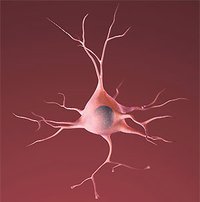This group is a subgroup of Life Sciences.
Coordinator of this subgroup: Sander Bohte

Central to our efforts are two - closely related - research questions: “How do biological neurons compute information?” and “How do biological neurons learn to compute information?”. To answer the research questions, theoretical models are developed to fit existing neuroscience experiments, with and emphasis on spiking neurons. By fitting models to existing neuroscience experiments, theory links with actual neural data such that theoretical models can be constructed that provide falsifiable predictions.
Spiking Reinforcement Learning. We currently focus on the combination of detailed spiking neuron models with state-of-the-art insights on computational solutions for reinforcement learning. Scientifically, much is known about effective and powerful reinforcement learning methods, both with respect to spatial and temporal learning, and with respect to stochastic actions and environments. Implementations in neuronal systems however are far and in between, and in particular very few approaches prescribe how such powerful reinforcement learning would take place in layered networks of spiking neurons (like typical cortical structures), while also being biologically plausible.
Precise Spike Timing. Part of the group's effort includes finding models that explain "intermediately precise spike-timing" in neural models. Increasingly evidence is emerging that in biological systems neural networks can operate based on precisely timed spikes, and this might be the main mode of fast computation in distinct parts of the brain. In past work, we showed that computing with precisely time spikes in networks of spiking neurons works in practice just as well as more traditional neural networks. However, just as for traditional rate coding models, we know that the brain does not rely exclusively on timed spikes. Some intermediate computational models are needed. Recent work elsewhere has focused on probabilistic computing in "poisson" spiking neurons; unfortunately, this type of neuron model does particularly poorly when replicating high-resolution temporal precision in real spiking neurons (e.g. the finding of the group of Simoncelli). A different emphasis on the balance between spike-timing and probability encoding may provide a better model.
MSc Projects: Talented students are always welcome to come and do their MSc-thesis work, either based on their own proposed ideas, or based some ready-made potential MSc thesis projects. Feel free to contact Sander Bohte .
Researchers
- Sander Bohte (group leader)
- Jaldert Rombouts (PhD student)
- Karl Tuyls (Senior staff researcher)
- Bram Veenboer (MSc student)
- Kiril Goguev (MSc student)
